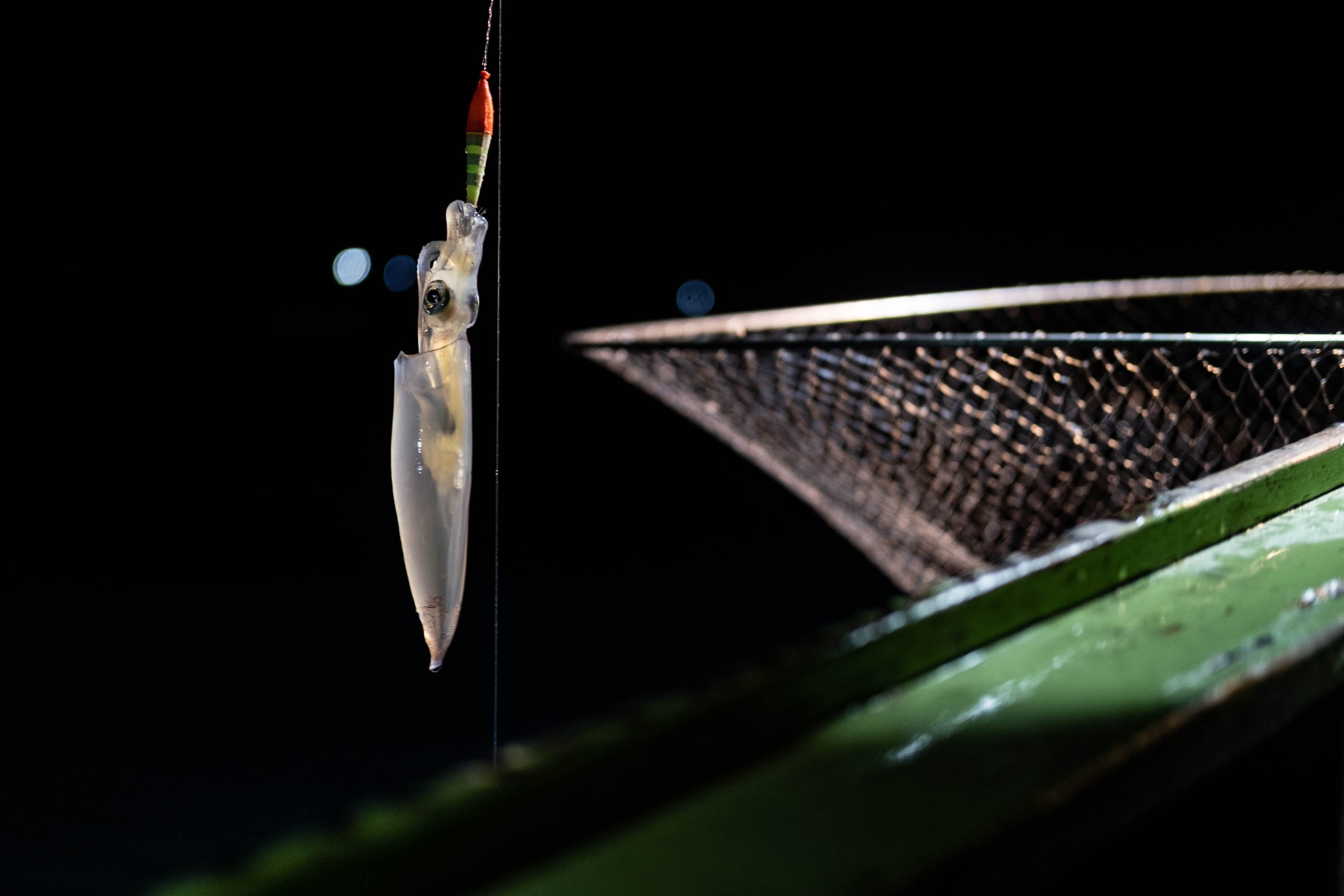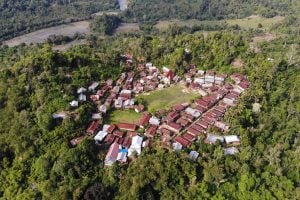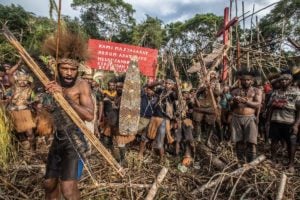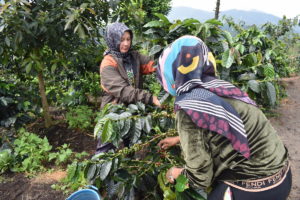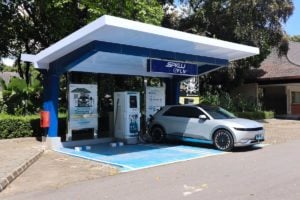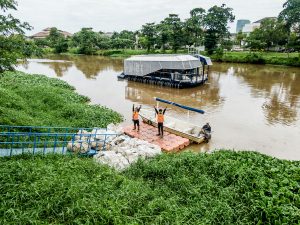On the night of 1 April, strong winds brought drizzle, lightning and metre-high waves to the seas around the Bangka Belitung islands in western Indonesia. Ismu Bai decided to return from his squid-fishing trip early.
“Thankfully I was able to get two kilograms [of squid]. The important thing is to get home safely to your family,” says Ismu, who has for decades fished on the east coast of Bangka Island, one of two in the province of Bangka Belitung Islands. He says the waters around it attract fishers from as far away as Java, 400km to the south.
“During spawning season, there are many mother squid looking after their young. They are known to be fierce and hungry, so they are easy to bait,” Ismu notes. Local fishers like himself are fortunate that fishing conditions are still good and they do not have to go out too far, he adds.

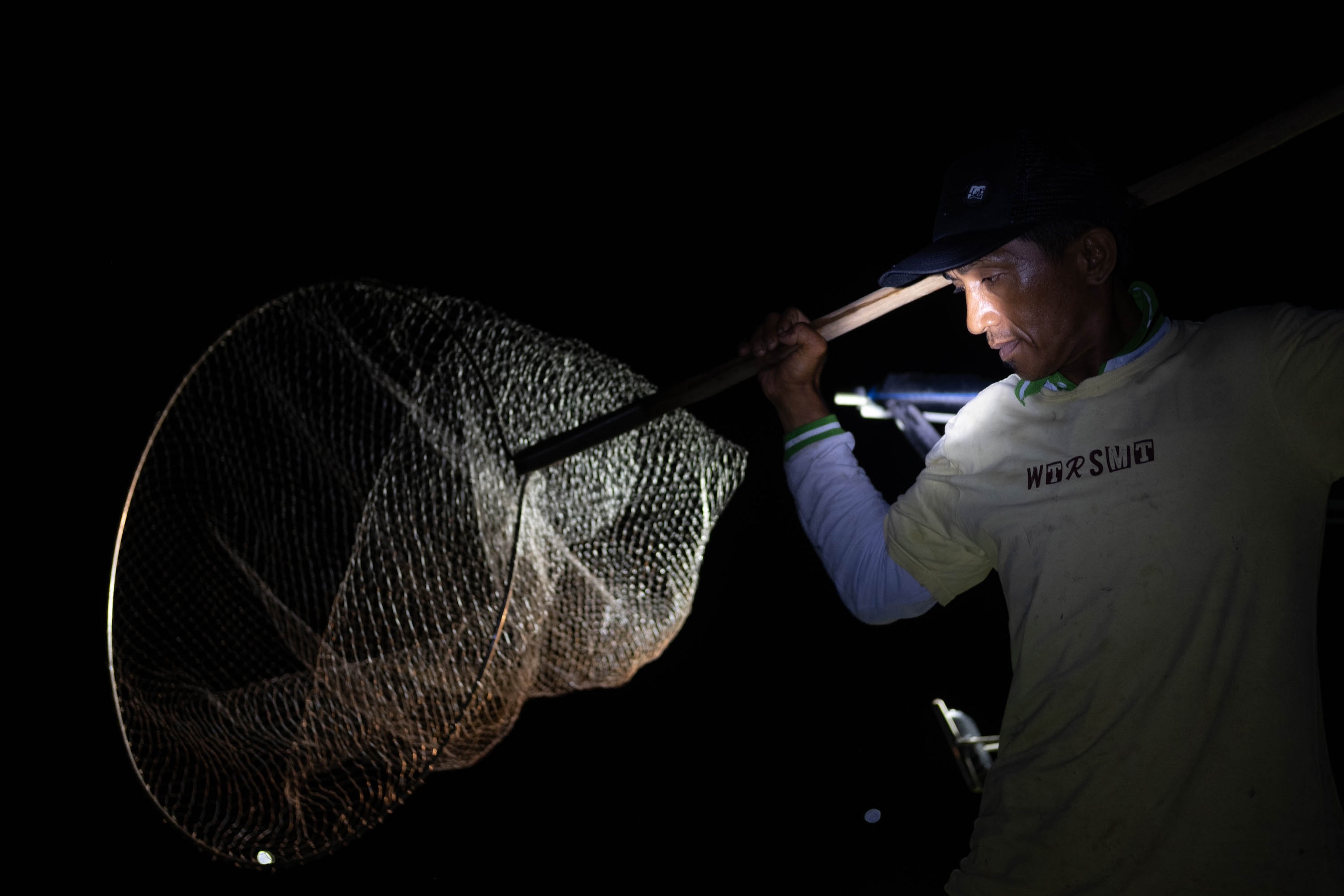
But those around the Bangka Belitung islands are increasingly anxious about whether the sea will always have such favourable conditions. They particularly fear the impact of tin mining.
Mining’s surge troubles squid fishers
Tin has been mined in Indonesia for hundreds of years, but the activity has grown significantly this century. Mining on land and at sea took off after reforms in 1998 liberalised regulation, with illegal mining increasing in parallel with legal activity.
Marine tin mining is carried out by dredging or sucking sand from the seabed, which is then washed to separate out the tin. The material is traditionally associated with cans, but it is also used in high-tech products to solder electronics.
Small-scale, community-led operations use wooden pontoons that float on plastic barrels to mine tin. Commercial miners use dredgers and specialist suction vessels that can pull up more than 3.5 million cubic metres of material every month.

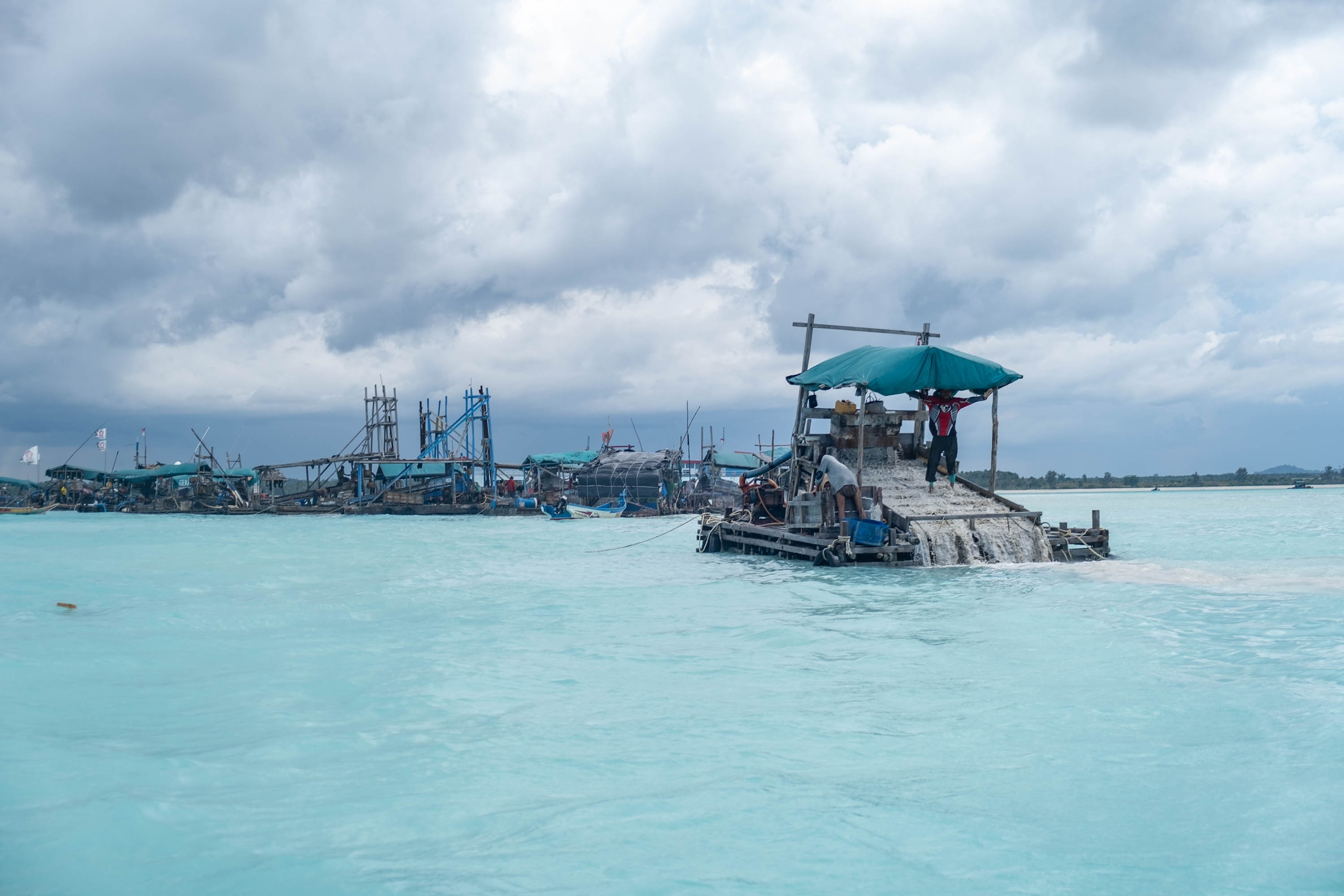
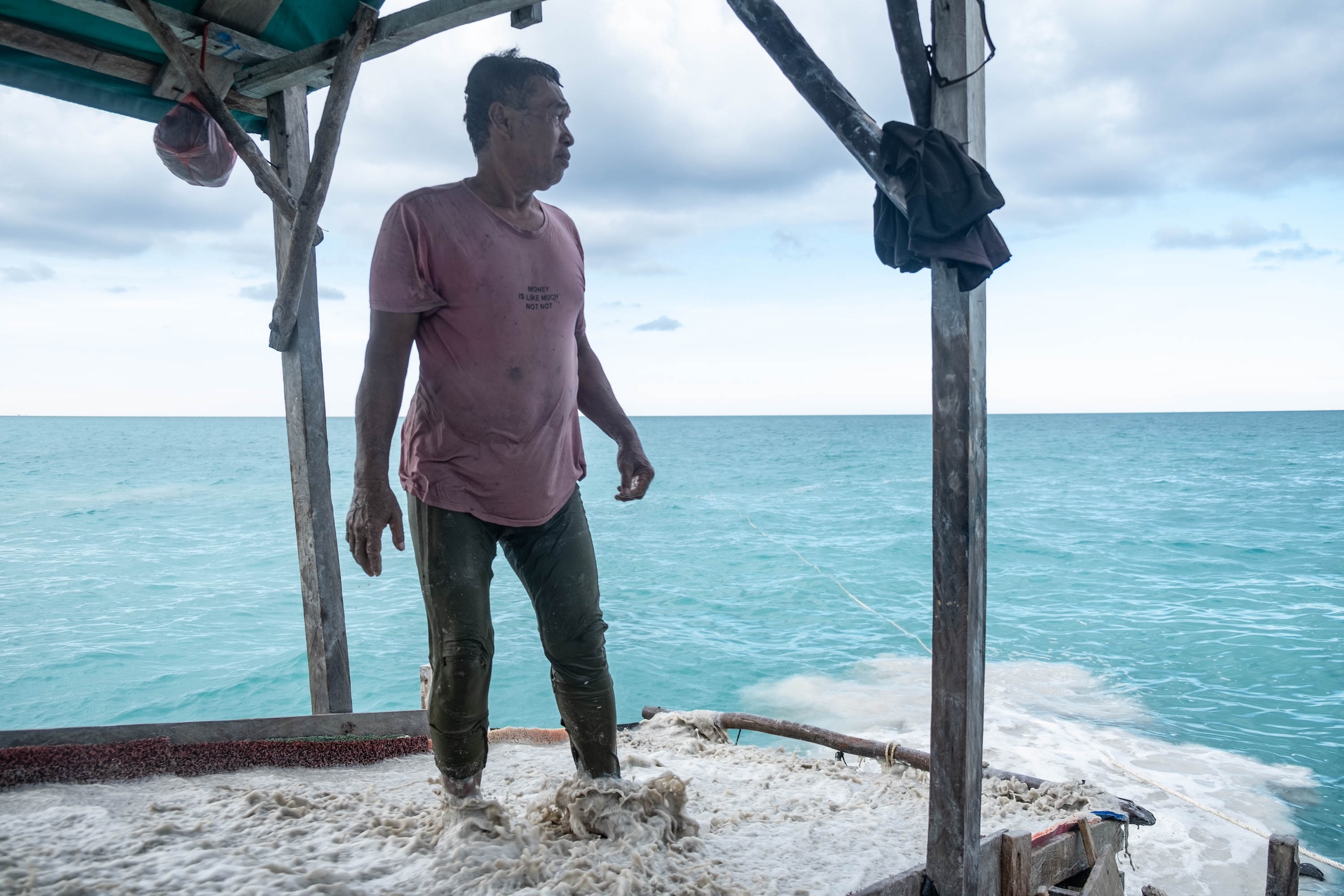
Currently, all tin mining methods dispose of waste byproducts directly into the sea, says Ahmad Subhan Hafidz, executive director of the Indonesian environmental NGO Walhi Bangka Belitung.
The tin and heavy metals of mining waste can spread long distances, settling on reefs and other habitats.
“Since various tin-mining technologies began operating in coastal and marine areas, there has been damage to the coastal and marine ecology and the threat of loss of the wisdom [and] values of the people of the Bangka Belitung islands,” Hafidz tells Dialogue Earth.

Coral counts the cost
According to Walhi Bangka Belitung, in 2015 there were nearly 82,300 hectares of coral reef around the Bangka Belitung islands. Its 2017 analysis of satellite imagery detected over 12,500 hectares of live coral and nearly 5,300 hectares of dead coral. The other 64,500 hectares of coral had disappeared.
Researchers say tin mining activity has contributed to this rapid coral loss, as well as that of sargassum meadows. Both are vital squid habitats. “Simply put, without coral reefs, squid will not be able to live and reproduce. Almost all squid life cycles [mating, spawning and juvenile life] are very dependent on coral reef ecosystems,” says M Rizza Muftiadi, a coral researcher from Bangka Belitung University.
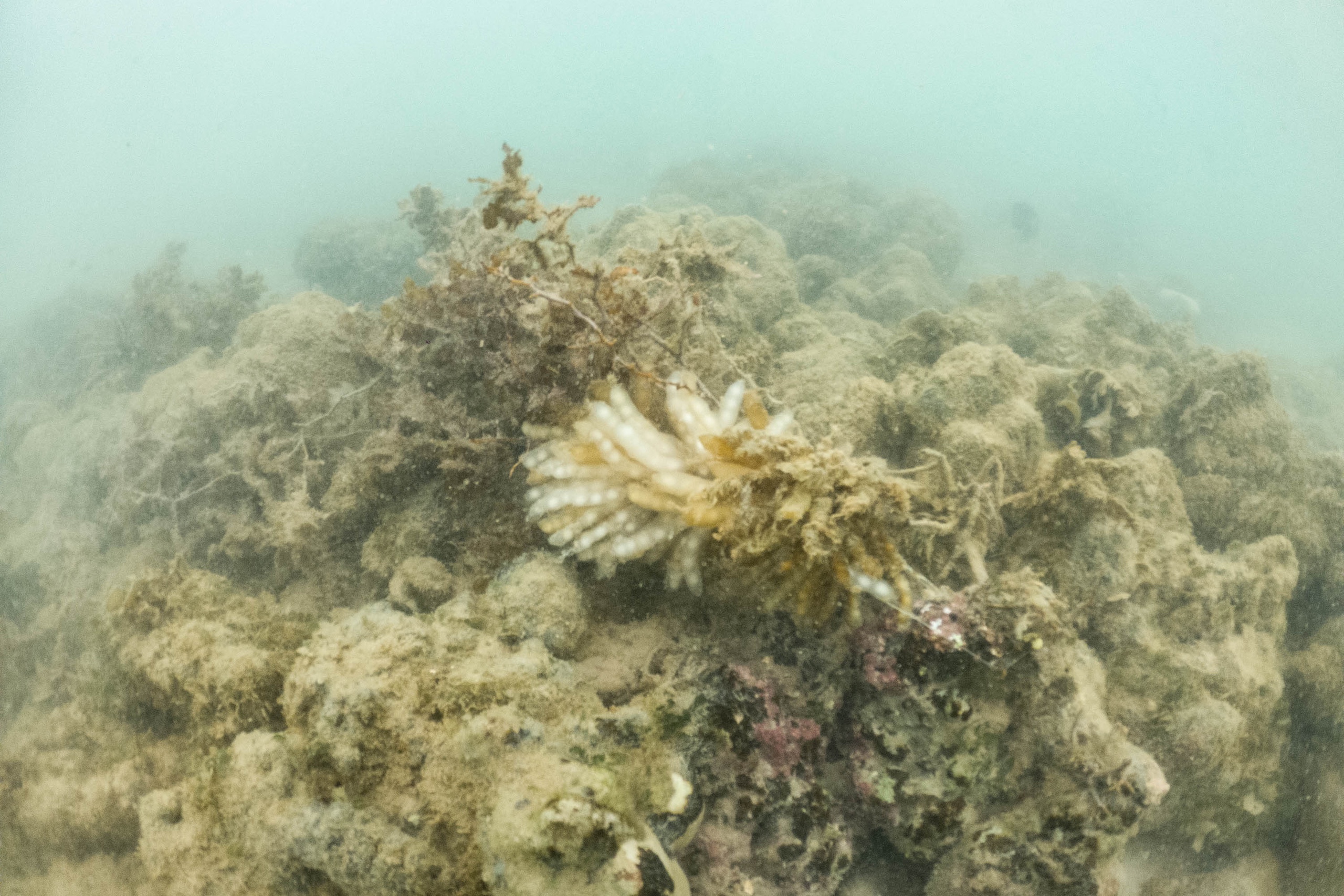
“While tin mining activities on land and sea around Bangka Island are still ongoing, coral reefs and squid will continue to be threatened,” he adds. “This will be exacerbated by climate change and other phenomena.”
The impacts of this tin mining has also been felt on land. The people of Bangka Belitung feel it has forced them to stop traditional crop growing, because some of the land has been converted into tin mines.
Dialogue Earth spoke to Sukardi, a community leader of the Mapur tribe, living on the northern tip of Bangka Island in the hamlet of Tuing: “Most of the residents in Tuing now only go out to sea”, instead of planting vegetables.
In the hamlet of Kedimpal on Bangka Island’s eastern coast, income from agriculture used to be supplemented by harvesting the plentiful shellfish on the shore. Now, the hamlet is dominated by dry, dead sea pine trees – an indication of the area’s soil health. Locals blame tin mining for the depleted state of the local ecosystem.
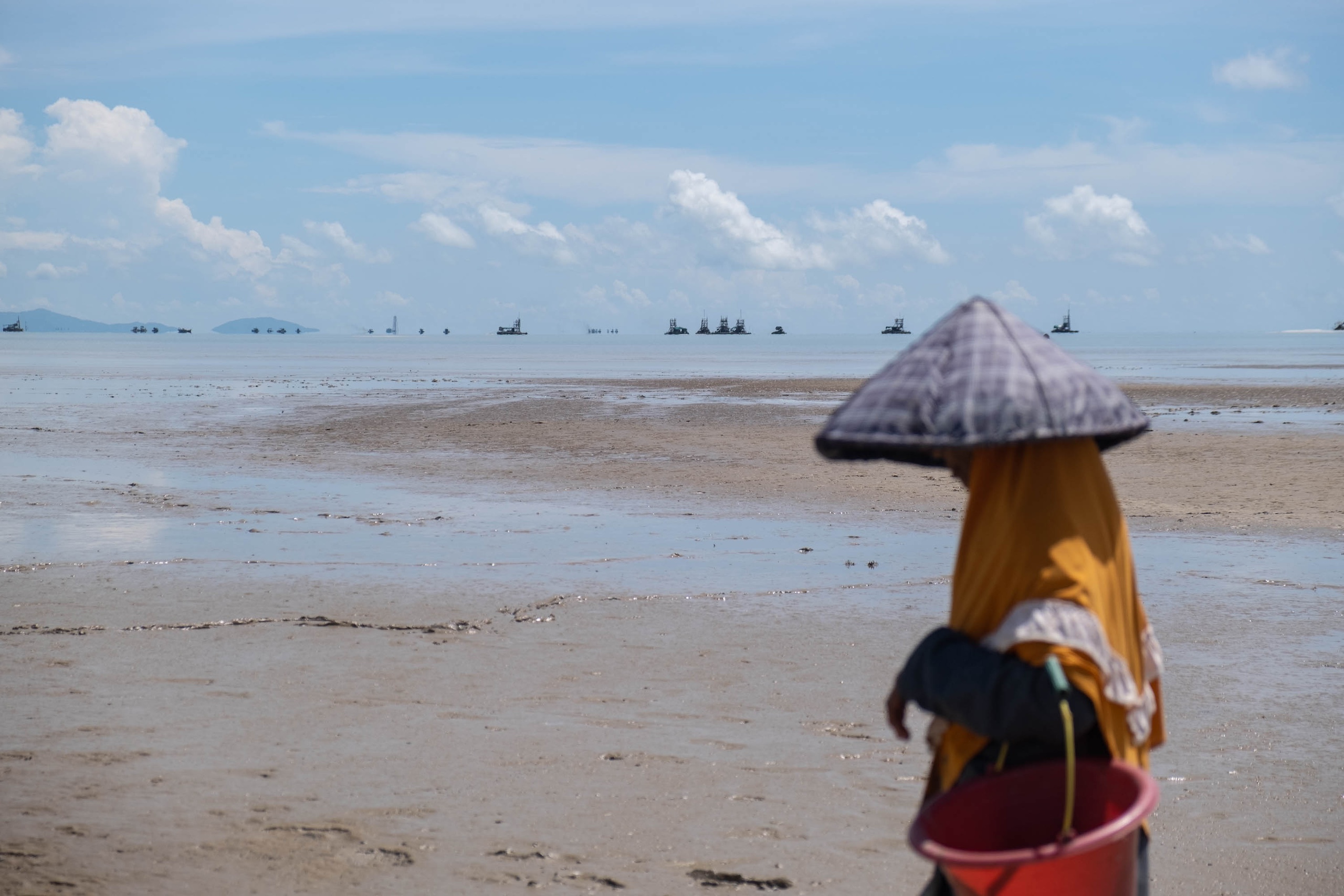
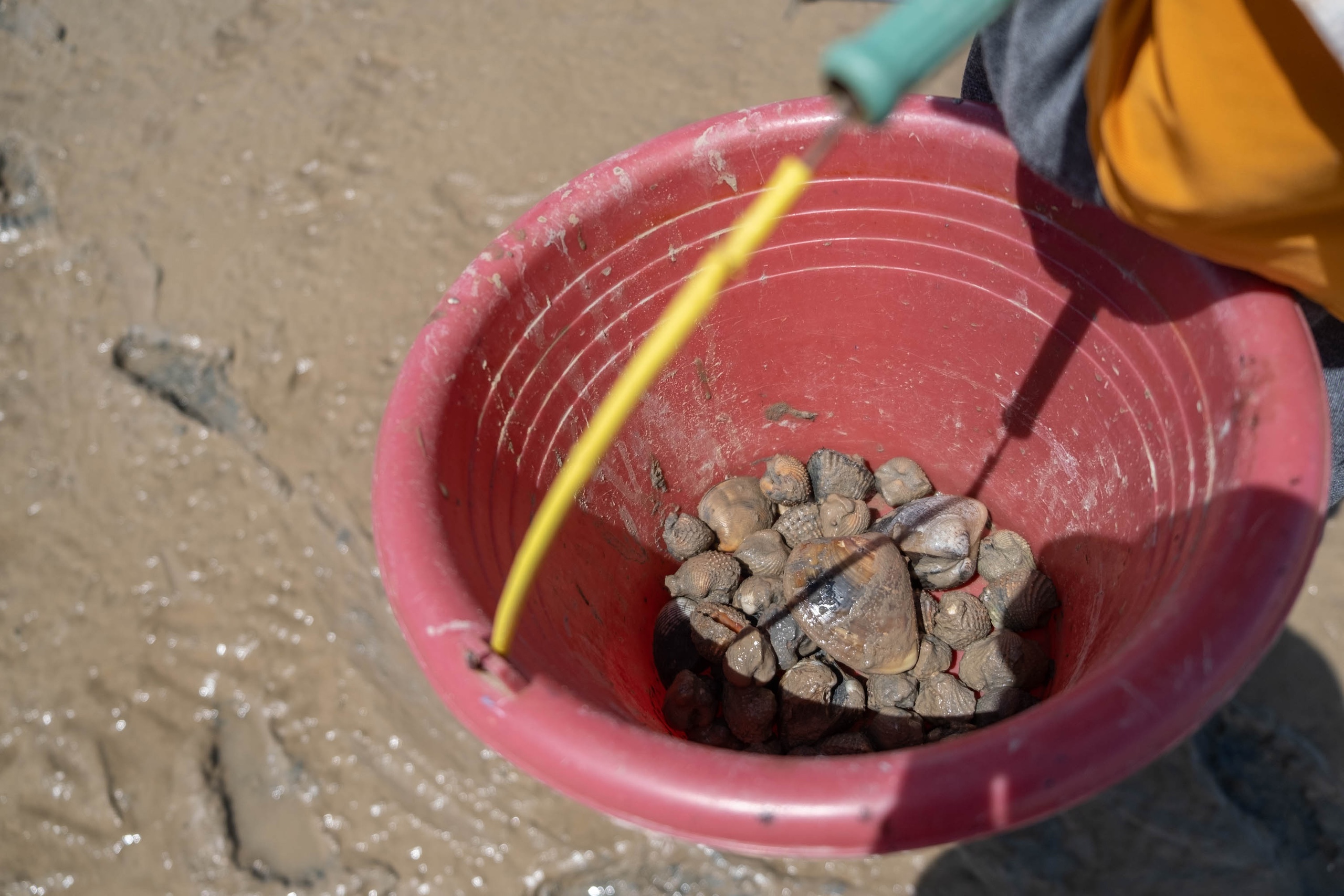
Elsa is a shellfish picker in Batu Beriga, a village on the eastern tip of Bangka Island. She says “on land there are no longer any gardens”, while the shore’s shellfish population has been significantly depleted. Ironically, she now depends on her child’s tin mining income.
Permits trigger protests
A 2018 inventory found just over 12,600 mining pits spread across 15.58 million hectares in all regions of the Bangka Belitung islands. The province’s PT Timah mining company is a major player in Indonesia’s tin sector.
The anxiety of fishers in Batu Beriga has been fuelled by the approval in 2023 of the company’s marine tin plan, which involves mining in their previously untouched area. This proposal was rejected by the community in 2019, putting a temporary pause on mining.
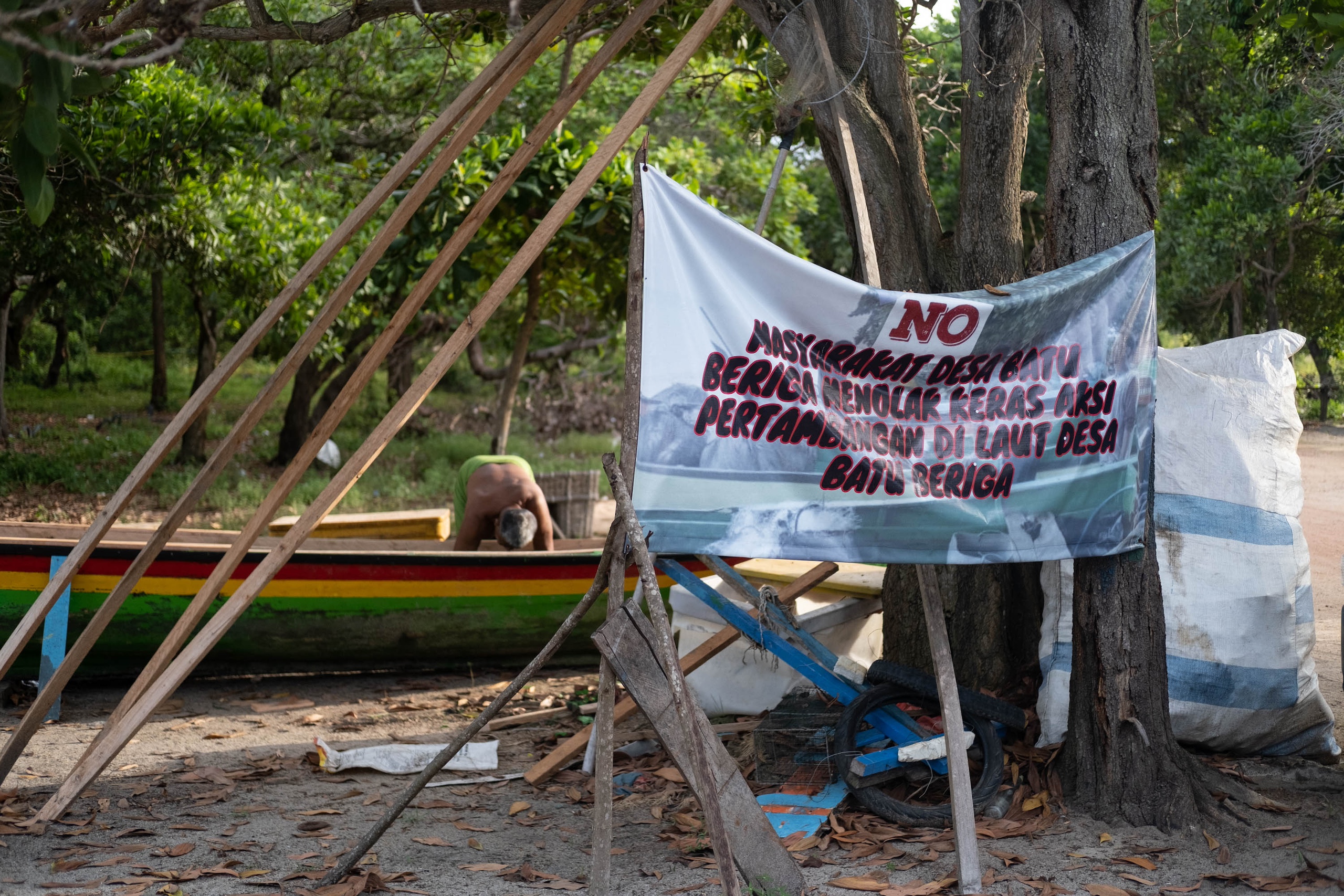
Between 2018 and 2023, tin mining activities in the area have caused 33 instances of community conflict, including demonstrations against the government and mining. On Earth Day in April, Batu Beriga villagers and other community groups held a demonstration at provincial government offices. They demanded the revocation of mining permits for Batu Beriga and other areas.
In response, the acting governor of the province of Bangka Belitung Islands, Safrizal ZA, promised to request the company not mine near the village without the community’s consent.
“We cannot directly revoke the mining business permit, because I was not the one who issued it,” he conceded in a statement. “But I can write to the ministry that issues mining business permits so that the one in [Batu] Beriga will be reviewed. We will guard it together.”
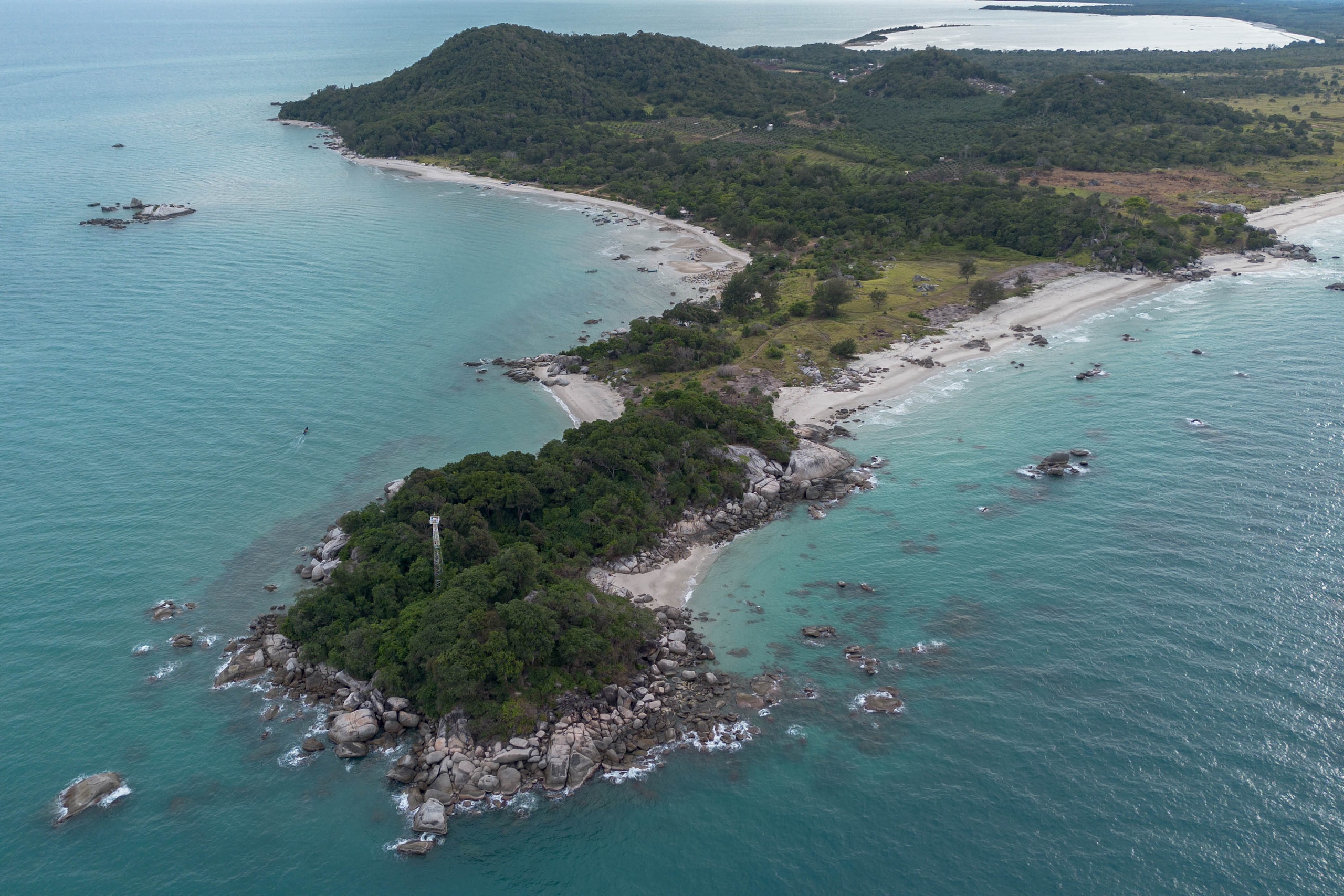
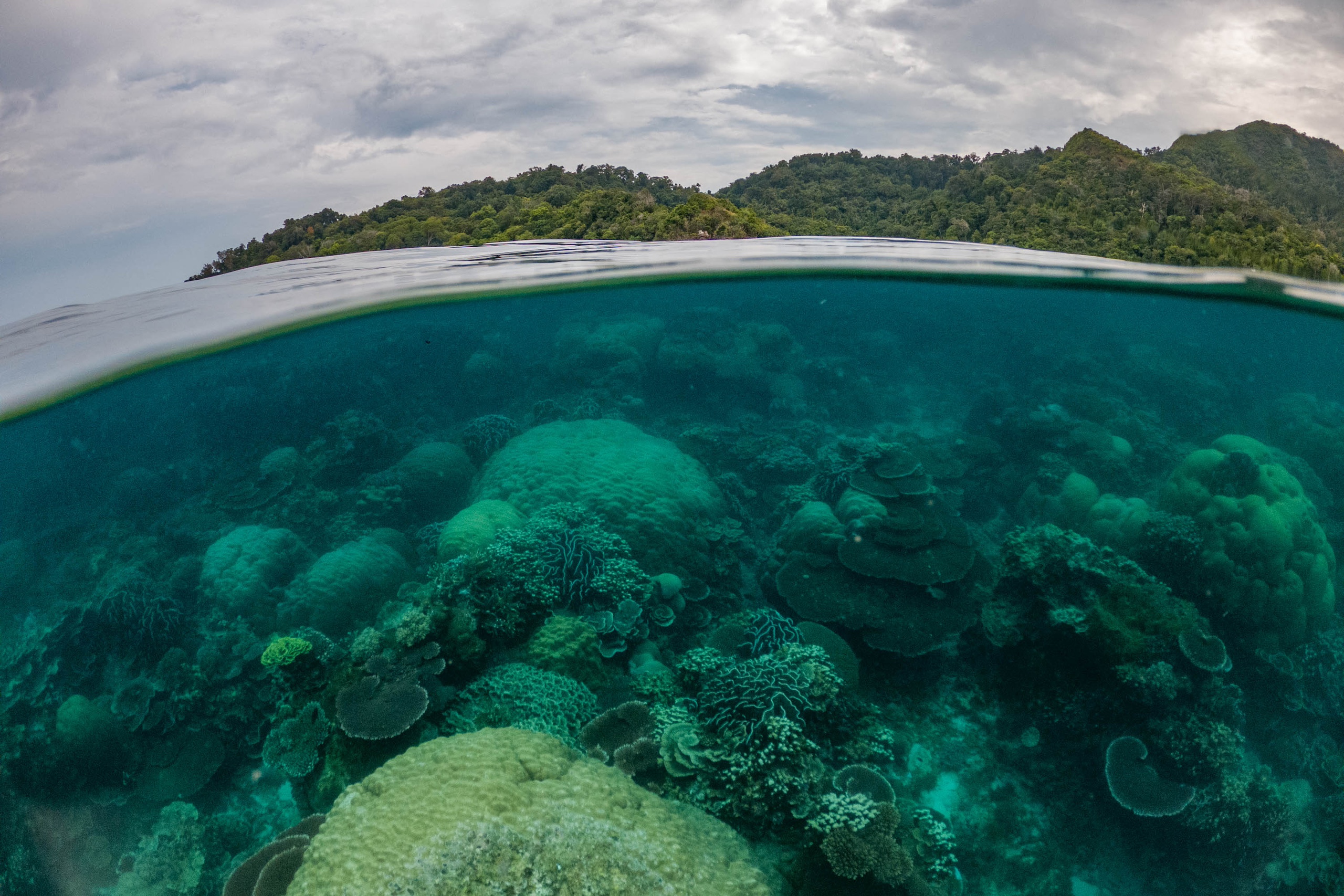
Mining company stresses restoration efforts
Anggi Siahaan, head of corporate communications at PT Timah, says the company has carried out significant remediation works both on land and at sea.
Between 2016 and 2023, this included sinking over 3,100 fish shelters, transplanting 51 hectares of coral, planting nearly nine hectares of mangroves and placing 96 hectares of artificial reef, he says. The company has also conducted restocking by releasing about 40,400 squid and 2,400 crabs.
“The implementation of [remediation] must be seen as an integrated step with mining activities,” says Anggi. “The implementation of good and correct mining practices must be carried out effectively and can provide optimal results with minimal environmental impact.”
But some fishers and scientists question the effectiveness of remediation efforts, and say there is little point restocking or trying to rebuild squid, fish and coral populations if they continue to be impacted by mining waste.
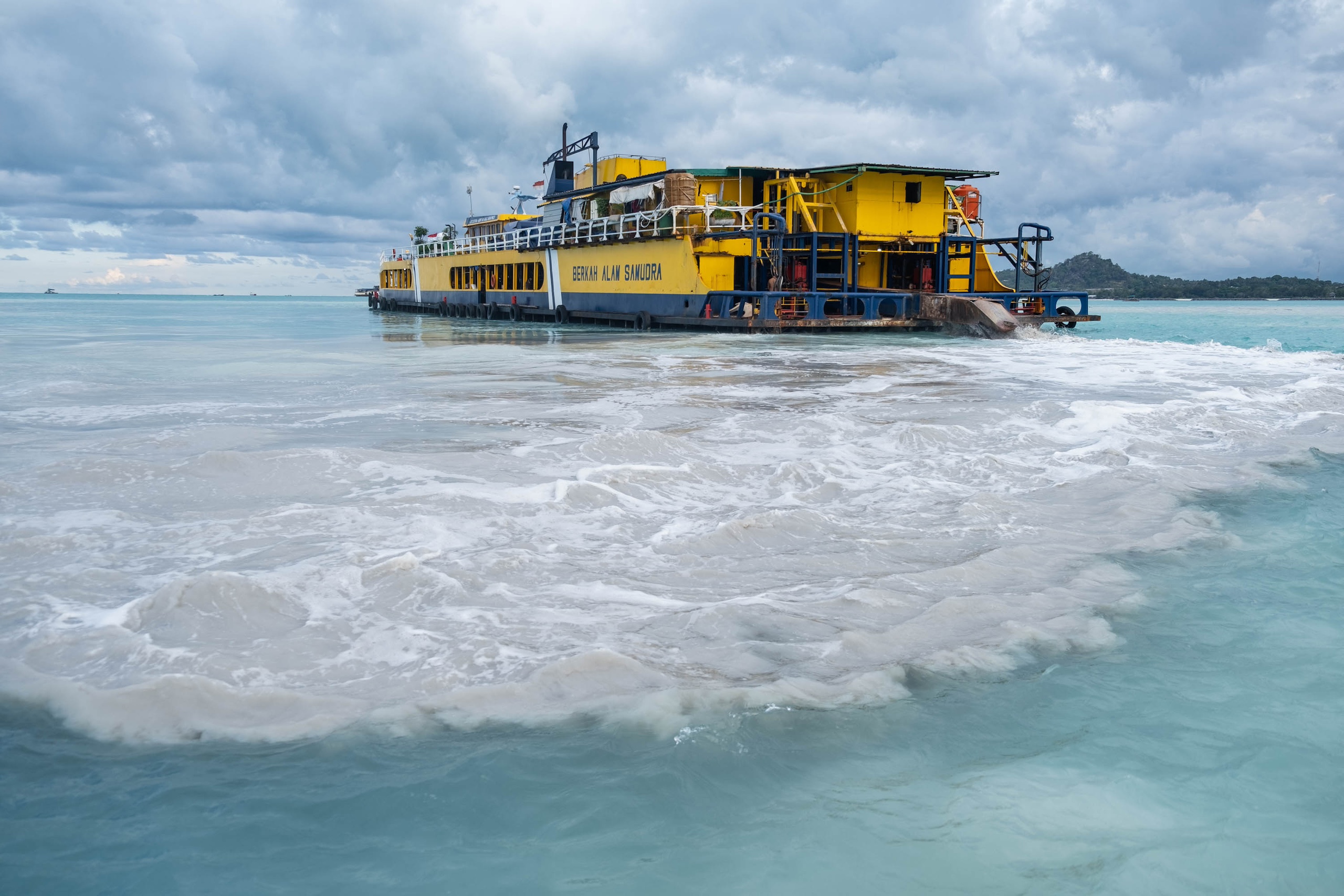
When presented with their findings, Anggi says the company carried out environmental management, complied with all government regulations, and had never been warned about or fined for environmental non-compliance. The world needs tin, and PT Timah is committed to responsible and sustainable mining, he says.
Struggling for squid
As well as mining, squid fishers also have to contend with unpredictable weather and other fishers coming to the island’s waters. Large ships set up further offshore, which some blame for reducing coastal squid numbers.
Near Batu Beriga, where the waters are one of few areas untouched by tin mining, locals say squid catches have declined in the past decade.
Selling two kilograms of squid – the amount Ismu hauled that night in April – may not cover the costs incurred to catch it. “If sold, two kilograms of squid can only get 160,000 rupiah [around USD 10],” says Reno, a fisher and member of the Tourism Awareness Group (Pokdarwis) for Batu Beriga. “We often lose money and are forced to go into debt again to go to sea the next day.”
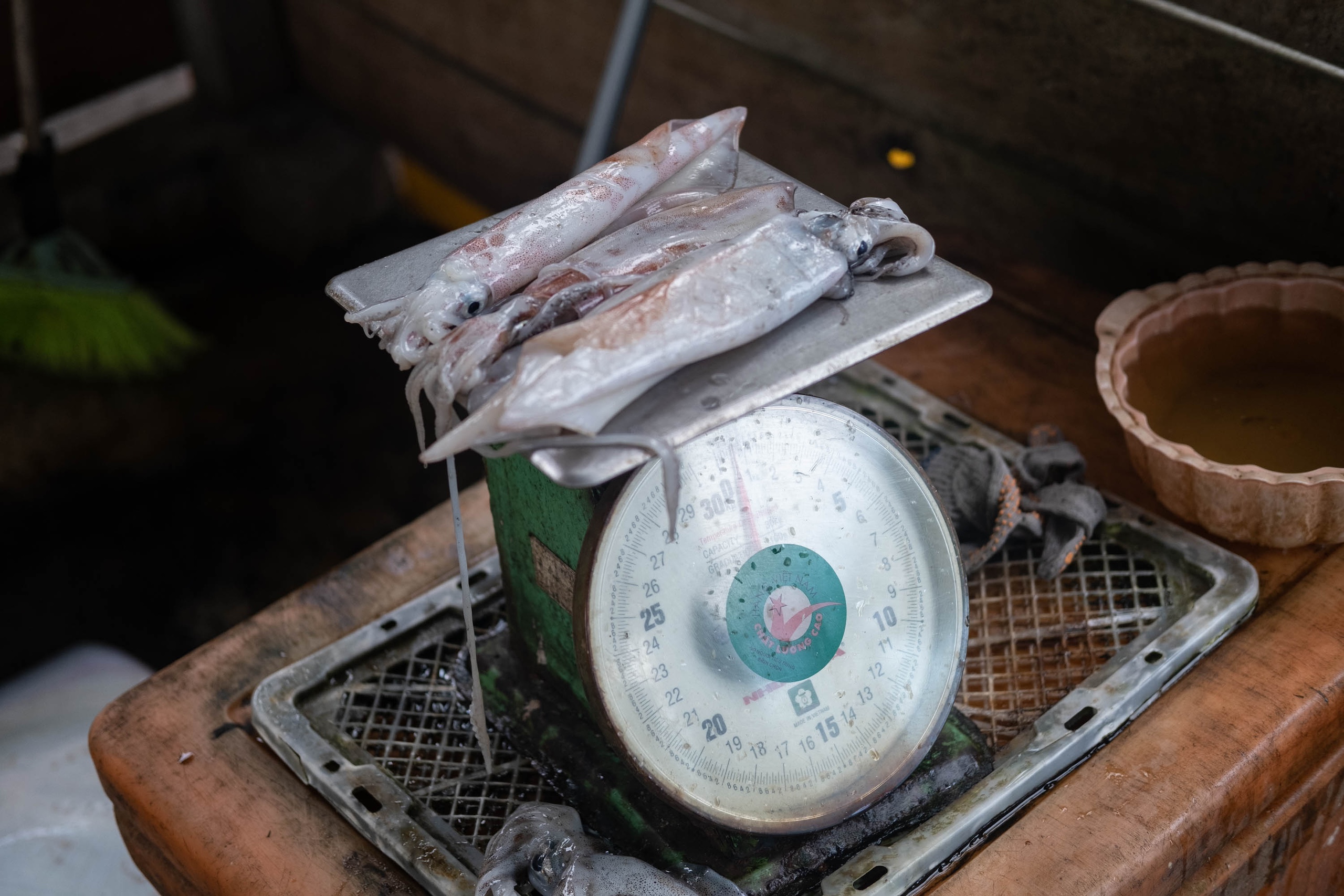
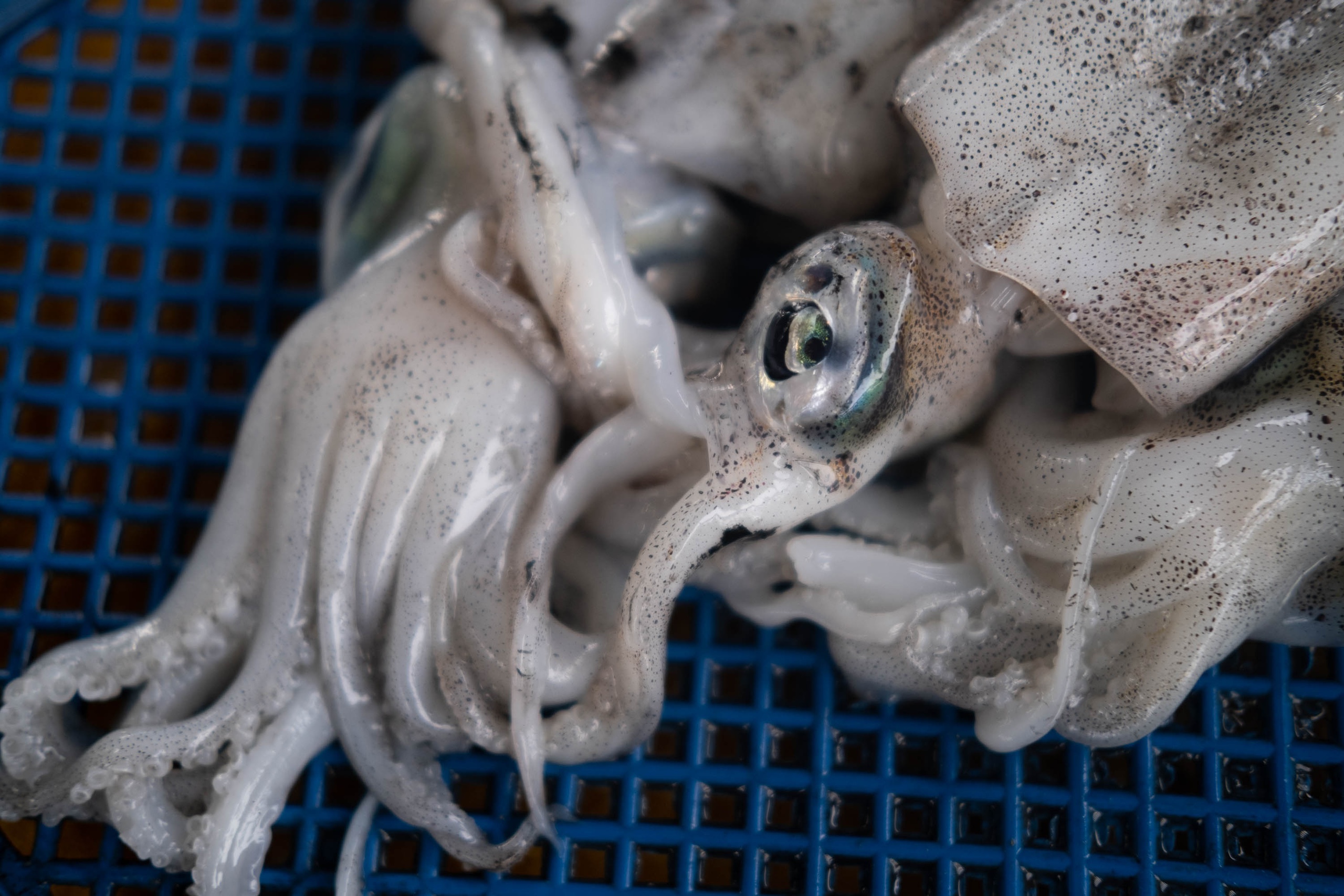
Reno says most local fishers have re-mortgaged their houses for the money to go to sea, and that “many fishermen here are already in tens of millions of rupiah of debt with fish middlemen [village-level buyers]”.
Giving thanks to the sea
For fishers on Bangka Belitung, there are usually two peak squid seasons: the first from June to August, and the second from October to January. In June, villagers usher in the season with the taber laot ritual, in which they give thanks for the past year’s marine harvest and offer a prayer for its increased abundance. People are prohibited from going to sea during this three-day period.
The ritual is carried out by various Malay tribes in Bangka Belitung. In the local dialect, taber refers to efforts to heal, purify or restore, and laot means sea. Its date is closely associated with the life cycle of marine animals, especially squid, because they are an important catch. It is hoped the ritual locking of the sea to fishers gives the sea a rest and replenishment.
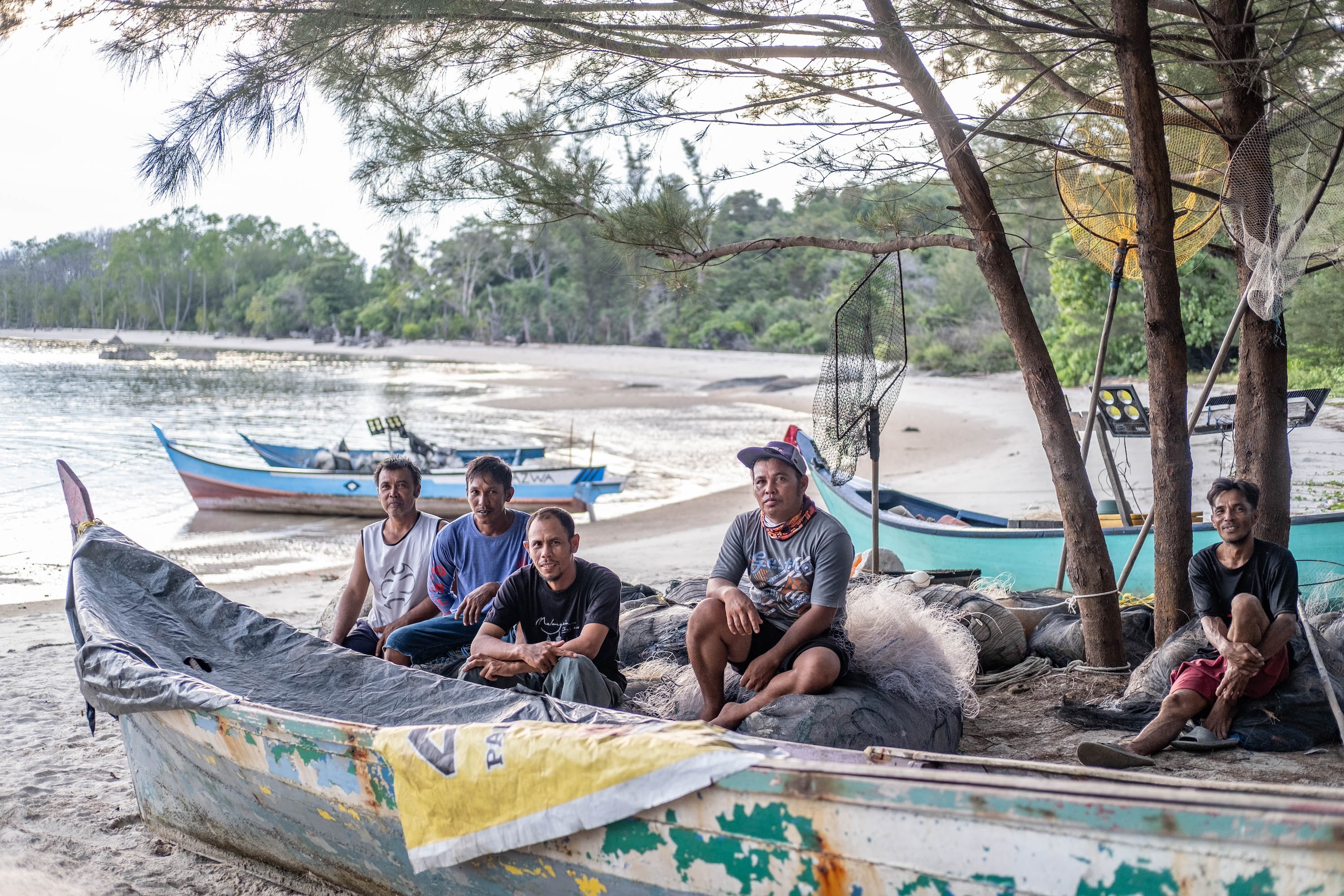
Ismu, from Batu Beriga, says there must be an appreciation for the sea, which has supported his community for centuries: “There are strong reasons that make us continue to look after it.”
